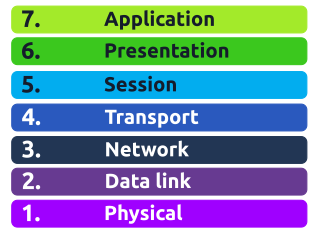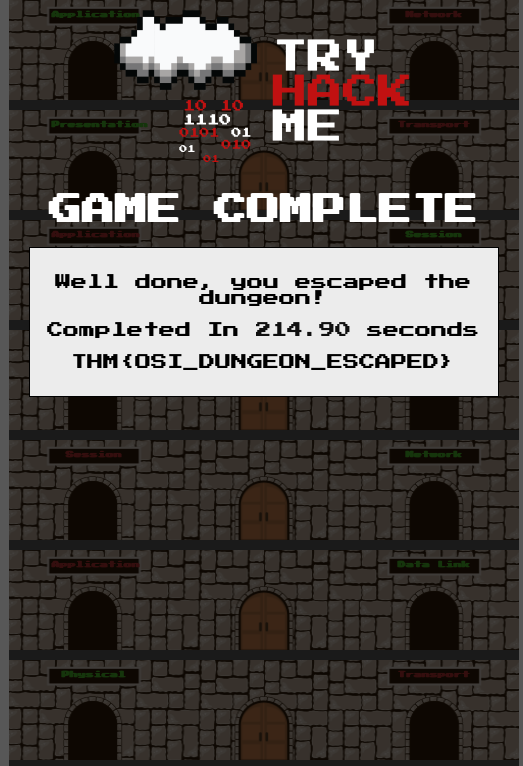Network Fundamentals: OSI Model (TryHackMe)
 Jebitok
Jebitok
In this article, I will write the writeup of the OSI Model overview that covers the different layers i.e Physical, Data Link, Network, Transport, Session, Presentation and Application Layers. Here is a little overview of the OSI Model before we get to the walkthrough based on THM’s documentation for the tasks.
The OSI model (or Open Systems Interconnection Model) is an absolute fundamental model used in networking. This critical model provides a framework dictating how all networked devices will send, receive and interpret data.
One of the main benefits of the OSI model is that devices can have different functions and designs on a network while communicating with other devices. Data sent across a network that follows the uniformity of the OSI model can be understood by other devices.
The OSI model consists of seven layers which are illustrated in the diagram below. Each layer has a different set of responsibilities and is arranged from Layer 7 to Layer 1.
At every individual layer that data travels through, specific processes take place, and pieces of information are added to this data, which is what we'll come to discuss in the upcoming tasks within this room. However, for now, we only need to understand that this process is called encapsulation and what the OSI model looks like in the diagram below:

Physical
What does the "OSI" in "OSI Model" stand for?
Open Systems InterconnectionHow many layers (in digits) does the OSI model have?
7What is the key term for when pieces of information get added to data?
EncapsulationWhat is the name of the numbering system that is both 0's and 1's?
BinaryWhat is the name of the cables that are used to connect devices?
Ethernet CablesWhat is the name of this Layer?
Data LinkWhat is the name of this Layer?
NetworkWill packets take the most optimal route across a network? (Y/N)
YWhat does the acronym "OSPF" stand for?
Open Shortest Path FirstWhat does the acronym "RIP" stand for?
Resource Information ProtocolWhat type of addresses are dealt with at this layer?
IP AddressesWhat is the name of this Layer?
TransportWhat does TCP stand for?
Transmission Control ProtocolWhat protocol doesn't care if data is received or not by the other device?
UDPWhat protocol would an application such as an email client use?
TCPWhat protocol would an application that downloads files use?
TCPWhat protocol would an application that streams video use?
UDPWhat is the name of this layer?
SessionWhat is the technical term for when a connection is successfully established?
SessionWhat is the name of this Layer?
PresentationWhat is the main purpose that this Layer acts as?
TranslatorWhat is the name of this Layer?
ApplicationWhat is the technical term that is given to the name of the software that users interact with?
Graphical User InterfaceCan you escape the OSI dungeon? Climb the levels in the correct order to escape the dungeon and reveal the flag! (Can you beat our staff high score of 19 seconds?) Click the "View Site" button on the right to start.
Escape the dungeon to retrieve the flag. What is the flag?
THM{OSI_DUNGEON_ESCAPED}
Thank you for reading my article. Please leave any questions or comments on improving my learning journey and the THM challenges.
Subscribe to my newsletter
Read articles from Jebitok directly inside your inbox. Subscribe to the newsletter, and don't miss out.
Written by

Jebitok
Jebitok
Software Developer | Learning Cybersecurity | Open for roles * If you're in the early stages of your career in software development (student or still looking for an entry-level role) and in need of mentorship, you can reach out to me.